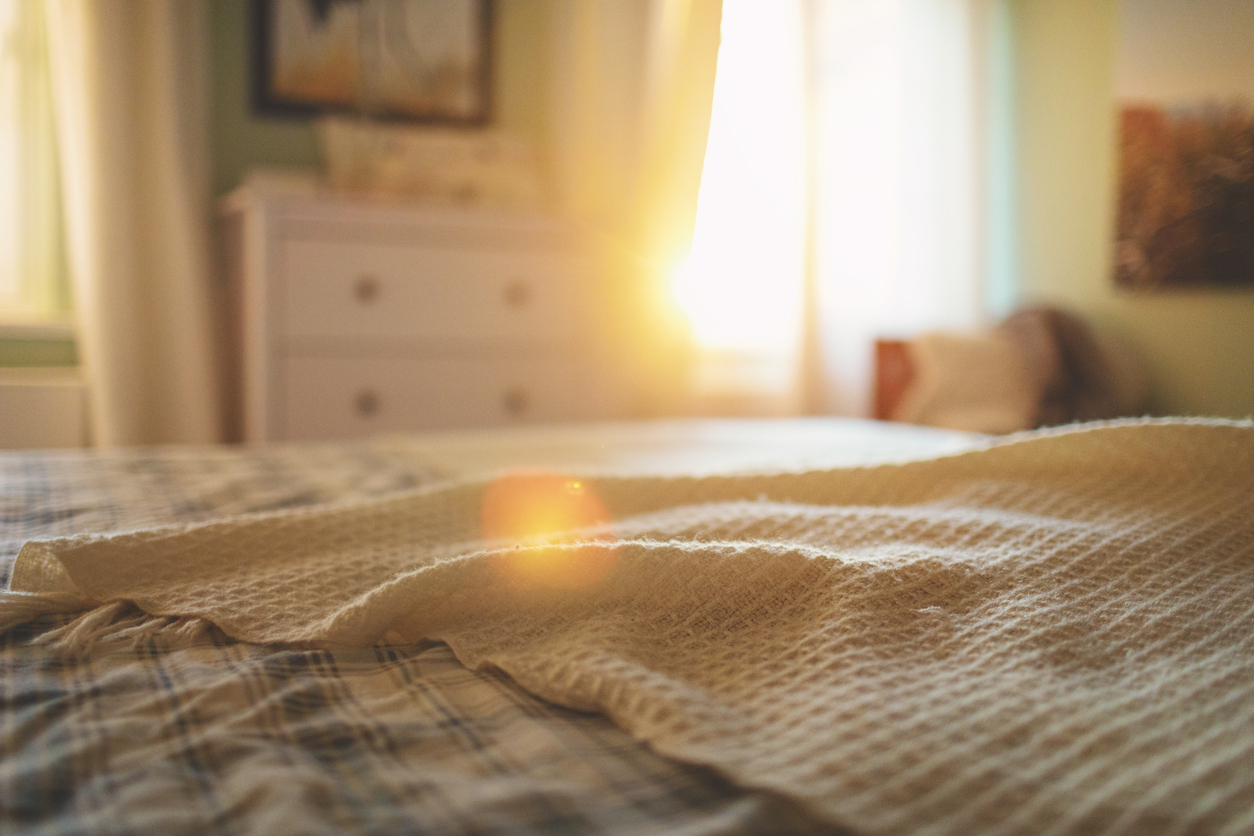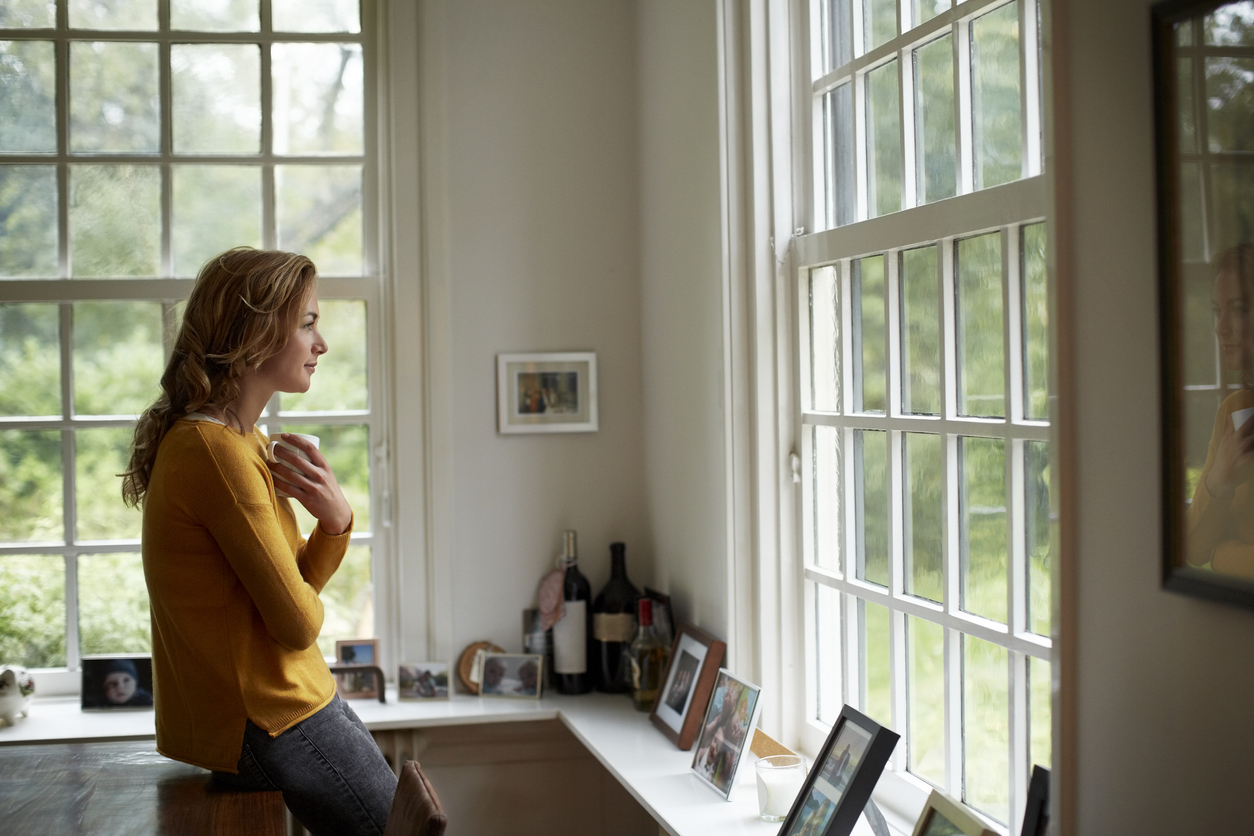We may earn revenue from the products available on this page and participate in affiliate programs. Learn More ›
“Location, location, location!” may be a well-known real estate rallying cry, but the orientation of a house is important as well. House orientation refers to the position of a structure on its site, and it’s typically described by the cardinal direction that the front facade faces—for example, a home with its main entrance facing north would be described as a north-facing house.
Considering the direction a home faces is crucial for both house hunters and prospective new home builders. It will affect the amount of sunlight the interior receives, heating and cooling costs, home maintenance, and more. However, there isn’t a “best” direction for a house to face. Each orientation offers a different set of benefits, but knowing their benefits and drawbacks can help homeowners make smarter choices.
South-facing and east-facing houses get the most sunlight.

In the U.S and the rest of the northern hemisphere, south-facing windows receive the greatest amount of sunlight because the sun shines from the south. It’s also important to note that, because the sun rises in the east and sets in the west, an east-facing home will receive the most morning sun and a west-facing house will get more afternoon sun.
Home buyers are often attracted to houses that receive plenty of natural light, which is why real estate agents like to tout a southern exposure. Exposure to natural light also has numerous health benefits, including a boost of vitamin D for your immune system and promotion of a healthy circadian rhythm for a balanced sleep-wake cycle.
Radiant heat can have benefits and drawbacks for a south-facing home.

A home’s orientation is important not only for sunlight but also for warmth. For instance, the southern exposure of a home (especially for homes with many south-facing windows) will collect most of the warmth from the sun, and this can be both a benefit and a detriment. Radiant heat from the sun can help reduce heating costs in the winter, especially in colder climates. But in the summer, that heat can lead to higher cooling bills.
A north-facing house may be easier to cool when temperatures rise.
Homes that are oriented to the north typically receive most of their direct sunlight in the back of the structure. As a result, a north-facing house may remain cooler in the summer than a south-facing house. In warmer climates, a north-facing home can have the benefit of reduced cooling costs when temperatures climb in summer. However, this means less natural light filtering in from the front of the house, since north-facing windows let in less sun.
South facing isn’t the best house orientation when it comes to sun damage.

One downside of direct sun exposure is the damage it can cause over time to siding, roofing, furniture, fabrics, and flooring. The south-facing side of your home will be most affected by sunlight, so you’d be wise to budget around completing home maintenance tasks like repainting or re-siding more frequently. For south-facing windows, it’s also a good idea to protect your furniture from damage by installing ultraviolet-blocking window film, curtains, or shades.
North-facing homes are prone to icing in winter.

If your main entrance faces north and you live in a region that gets ice and snow in the winter, your home could experience worse cold-weather effects. Because of the lack of direct sunlight, a north-facing home’s facade is more likely to fall victim to ice dams and icicles, plus driveways and slippery walkways can be especially treacherous. Since the front facade of a south-facing home receives more direct sunlight, any ice and snow it accumulates will melt more readily than it will on the houses across the street.
The direction a house faces might even influence your decor choices.

The amount of light a room receives may affect the color and fabric choices you make when you decorate. For instance, you might steer away from red and orange hues in west-facing rooms, which get most of their sunlight from 2 p.m. onward. Fans of bold or dark colors may want to confine them to south-facing rooms, which get enough light all day to complement more intense tones. And bedrooms with east-facing windows should probably be equipped with sturdy or sun-blocking window treatments, such as blackout curtains, so sleepers won’t be unnecessarily roused by the dawn’s early light!
House orientation affects the orientation of your landscape, too.
When considering your home’s orientation, remember that it also affects your landscaping and outdoor spaces. After all, the direction that your yard faces determines the amount of sunlight it receives. A south-facing yard will have sun all day, so sun-loving plants (and sun-loving people) may flourish there. A south-facing yard is similarly a fine location for a swimming pool.
If, however, you prefer to rest, relax, and recreate where it’s a bit cooler, a north-facing yard might be just the spot for a patio, deck, or grill. Folks who generally don’t have the opportunity to enjoy their yard until after school or work may appreciate a western exposure, which brings sunlight to your pool and deck later in the afternoon. Whatever your yard’s orientation, for the best chance of a thriving landscape, be sure to choose sun- or shade-loving plants that are appropriate for the light conditions.
Of course, the direction your house faces determines the view outside your windows.

If you’re lucky enough to live in an area with a scenic vista—be it a lake, beach, mountains, or a skyline—the direction your home faces really matters. For new construction, try to maximize the aesthetic qualities of the site by orienting your house properly in order to make the most of the view. Be sure to situate windows and outdoor spaces so that you’re able to enjoy the beauty of your surroundings, if at all possible.

